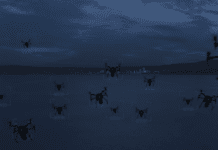This post is also available in:
 עברית (Hebrew)
עברית (Hebrew)
 Since the dawn of the Internet, security has been a big issue. Having machines communicate and transmit information over a public, worldwide network makes the data accessible to other machines. Naturally, that means that everyone can obtain any piece of information one desires, even if that specific piece was meant for someone else’s eyes only.
Since the dawn of the Internet, security has been a big issue. Having machines communicate and transmit information over a public, worldwide network makes the data accessible to other machines. Naturally, that means that everyone can obtain any piece of information one desires, even if that specific piece was meant for someone else’s eyes only.
For two and a half decades, this problem was addressed mathematically – data that people wanted to stay secure was transmitted in an encrypted form, which means its pieces were scrambled or switched with a code, only readable to someone who has the decryption key. But as computers get stronger, encryption keys become weaker and can be “guessed” by algorithms applying thousands of keys to each piece until it becomes readable.
A possible solution to the problem is moving away from mathematics to physics: Quantum encryption is a new kind of code, based on the work of scientists including Albert Einstein on quantum mechanics. The theory says that a photon – the basic particle light is made of – travels in a state that changes if someone observes it or tries to interact with it. This state, called polarization, makes it possible to have a message coded in photons and sent between two computers that know the state in which the photons are ought to be read. Any other party trying to decode the message will presumably get the polarization wrong half of the time (meaning for half of the “pieces”) and also leave its mark on the transmission, so both the eavesdropper and the receiver can’t read the message. This way, the message has to be encoded and sent again in order to be readable by the receiver, and each time there’s an interruption the sender and receiver know about it.
Current technology, though, can’t transmit the quantum-encrypted information through the World Wide Web’s switching equipment, which requires a direct optical fiber between the transmitter and the receiver – an old implementation that would almost totally prevent eavesdropping even with the oldest internet technologies.
 A possible solution was revealed this month in Cornell University’s online journal arXiv.org. Apparently, scientists in Los Alamos National Laboratory in New Mexico have been running an operational test quantum network for about two years. A central “hub”, which all the computers in the network are connected to, is used as a central point encoding and decoding quantum keys. Each computer has a laser transmitter which sends and receives quantum keys to and from the “hub”. Encrypted messages are sent to the hub for decryption, after which it re-encrypts them with the key it sent to the receiver.
A possible solution was revealed this month in Cornell University’s online journal arXiv.org. Apparently, scientists in Los Alamos National Laboratory in New Mexico have been running an operational test quantum network for about two years. A central “hub”, which all the computers in the network are connected to, is used as a central point encoding and decoding quantum keys. Each computer has a laser transmitter which sends and receives quantum keys to and from the “hub”. Encrypted messages are sent to the hub for decryption, after which it re-encrypts them with the key it sent to the receiver.
The scientists say this technology can enable quantum encryption to be applied in real-world networks. The first target for this kind of system is critical networks such as power grids, which can use this method to prevent hackers from disrupting their services.
By Yair Mohr

























